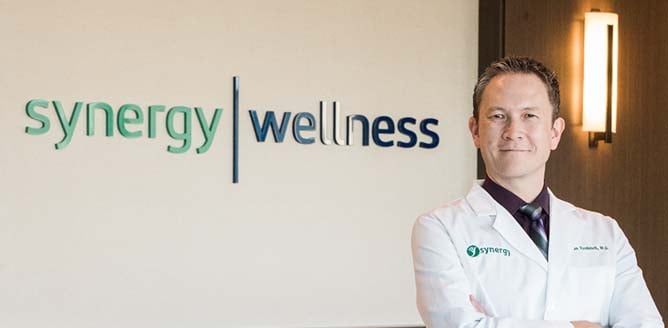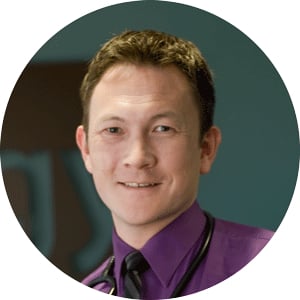
A fat transfer procedure transfers fatty tissue from areas where you have excess fat into an area that is lacking volume, such as your face, hands, breasts, buttocks, or hips. It’s a safe and long-lasting procedure that provides natural-looking results and is successfully undergone every year by thousands of people. If you’re dissatisfied with your appearance and think that you may benefit from the procedure, call Synergy Wellness Center in Bakersfield, CA and speak with a qualified medical professional about your options today.
When Should You Consider a Fat Transfer?
As a time-tested method for improving patients’ looks, the procedure has helped many people regain their confidence. If you have facial areas that appear creased and sunken, or if you desire a more permanent correction than temporary fillers provide, you may be an excellent candidate. Additionally, if you wish to improve your body contour, revise scars, fill bodily depressions, or rejuvenate your hands and face, then this procedure may be for you.
Are You a Good Candidate?
The underlying purpose of fat grafting is to fill in areas of your body that are volume-deficient. Common areas include the hands and face, areas of the skin where depressions exist (often the result of liposuction and/or scarring), as well as the breasts and buttocks. It’s extremely important that anyone looking into the procedure have donor sites that contain adequate fat deposits from which fat can be taken. Also, circulation problems, whether from a medical issue or smoking, can be a significant impediment to your candidacy.
Facial Fat Transfer Candidates
The face is a common area to have this procedure done. If you have facial creases (including laugh/smile lines, or crow’s feet) fat can be taken from the lower abdomen, the thighs, or other areas of abundance and injected into the problem areas of your face. Doing so can also fill in acne scars or sunken areas of the face, lips, and cheeks. Fat can also be grafted to the forehead to eliminate wrinkles.
Breast Augmentation Possibilities
If you’re someone who desires a relatively modest increase in breast size, fat grafting to the breast may be an option. However, it’s important for those in this position to already have a nice shape and good skin tone in the area they’re hoping to augment. Individuals with skin issues, sagging breasts, or who want a significant increase in breast size may want to look at other options.
The procedure can be useful when used in conjunction with a breast implant procedure. Those who have residual irregularities after undergoing a breast implant procedure can benefit from fat transfer to fill those irregularities in and provide a smooth contour and optimal shape.
For large increases in size, implants may be your best option. For modest increases in breast size, or to perfect the aesthetics of the area, fat grafting can help immensely.
Lumpectomy Correction
Those who have suffered from breast cancer and had to undergo a lumpectomy that left areas with less volume should know that fat transfer is an effective procedure for filling these areas in. This is also an option for those looking for total breast reconstruction following a mastectomy procedure. This type of augmentation is significant, and in order to achieve sufficient volume in the breasts, as many as two to four fat grafting procedures may be necessary. It’s a multistage process that you and your doctor can work out together.
Butt Augmentation
If you desire a fuller, more rounded shape to your buttocks, you have a few options. One of those is a fat grafting procedure often referred to as a “Brazilian butt lift.” The procedure provides a more curvaceous buttock without an implant: perfect for those looking to stay as natural as possible. During this procedure, liposuction is used to sculpt the surrounding area and collect the fat to be injected.
Hand Rejuvenation
As we age, the fat in our hands and feet tends to diminish, and the skin gets looser and saggier. Grafting fat onto the hands is an effective way to add volume, plump up wrinkled areas, cover up protruding blood vessels and tendons, and improve the quality of your skin over time.
To be a good candidate for hand rejuvenation, all you need is a positive attitude and realistic expectations.
How Is the Procedure Performed?
During the procedure, fat is harvested from one part of your body and then washed and purified. It is then expertly re-injected using specially designed needles into the target areas where augmentation is desired. Depending on the level of results wanted, it may take more than one procedure to achieve the desired results. Ultimately, the procedure can be broken down into a three-stage process which includes harvesting, purification and transfer, and placement.
Harvesting: How It’s Done
You and your surgeon will first select a donor site for fat removal. The area will be injected with a local anesthetic and the surgeon will create a small incision in the area. Fat will be removed from this area by your surgeon using a sterile technique of inserting a cannula connected to a syringe and carefully extracting fat from the targeted area only. This procedure is referred to as liposuction.
Purification and Transfer
The amount of fat removed from the donor area will depend on the size of the area you’re looking to augment. Once enough fat has been harvested from the donor area, it will need to be processed by your surgeon to prepare the fat cells for transfer to the small syringes that will be used for injection. Sometimes, purification of the fat involves a centrifuge used to spin the fat. Other times a filtration process is utilized to remove impurities.
Placement
At this point in the procedure, it’s time to prepare the area designated to receive the injections. Your surgeon will start by inserting a needle or a cannula into the incision at the site targeted for augmentation. Usually, the injection needle is passed in and out of the augmentation area(s) several times. Each time the needle or cannula is withdrawn, a line of fatty tissue parcels is deposited in natural tissue planes. This process will continue over and over again until the desired augmentation has been achieved. What will be left in the area is a grid-shaped area of deposited fat.
Some surgeons will massage the area to create the desired contour. Others prefer to let the placement technique create contour. Either way, once everything is completed the surgeon will place a bandage or other dressing over the grafted area.
The goal of your surgeon during this procedure is to help you achieve the results you want that are both natural-looking and aesthetically pleasing.
What Are Your Options?
Fat transfer uses your own body fat to alter body contour, reduce the appearance of scars, fill depressions created by previous liposuction or other surgeries, and rejuvenate your hands and face. Some common sites for obtaining fat necessary for the procedure include the abdomen, love handles, posterior arms, and the hips and thighs.
Every body is different, and you and your surgeon will discuss your options, including which areas of your body would benefit from the procedure, which areas are ideal for fat removal, and whether or not any additional or alternative procedures are appropriate.
What Is Scarring Like?
The procedure primarily uses needles, so any scarring that may occur typically comes from the liposuction performed at the donor site. However, since the incisions are small, the scars are small as well. Your surgeon is well-trained in placing the necessary incisions in hidden areas that won’t be visible. Over time, most liposuction scars will fade and become nearly invisible.
How to Prepare for a Fat Transfer Procedure
Before your procedure, your surgeon will provide you with very thorough preoperative instructions, answer any and all questions you have, record a detailed medical history, and perform a physical exam to determine your fitness for the procedure. Your surgeon may take pre-procedure photos to provide a “before and after” effect.
No matter what, make sure you’re well-hydrated before and after the procedure as hydration is necessary for a safe recovery and to ensure the best of outcomes.
Before the Procedure
If you smoke, your surgeon will advise you to cease at least six weeks prior to the procedure to avoid complications regarding wound healing and scarring. You should also avoid taking aspirin, nonsteroidal anti-inflammatory medications (NSAIDs, such as Advil or Motrin), as well as any vitamins or homeopathic regimens that may promote increased bleeding.
You will want to arrange for someone to drive you home after surgery and then stay with you for at least the first 24 hours unless both you and your surgeon have worked out other postoperative recovery plans together.
The Day of the Procedure
Fat transfer procedures can be performed in a variety of settings, including hospitals, free-standing ambulatory facilities, and office-based surgical sites. How long your procedure will last depends on how much fat is going to be removed from the donor site and how many donor liposuction sites there are. Typically, people looking to enhance the appearance of their face and/or hands will need far less donor fat than those looking to augment their breasts or buttocks.
You’ll also receive medications from your surgeon that will help to make you as comfortable as possible. Often times, local anesthesia and intravenous sedation or used for patients who are undergoing a fat transfer procedure, but sometimes general anesthesia is more desirable.
For safety, several monitors will be set up prior to the operation that will be used to check your heart rate, blood pressure, pulse, and the amount of oxygen circulating throughout your blood. Your surgeon will then follow the surgical plan the two of you discussed before the day of your procedure. Once the procedure begins, your surgeon may decide to combine a variety of techniques or change one or more of them if they think it will encourage the best result.
Once the procedure is complete, you’ll be taken to a recovery area where you’ll continue to be closely monitored. You may be fitted with a compression garment at the site of your liposuction to help shrink the skin. There’s typically very little pain involved with liposuction, with most patients describing any residual soreness as similar to that felt after a vigorous workout. You’ll probably be able to go home after a short observation period.
Get Started
If you have facial areas that appear sunken or wrinkled or wish to improve your body contour and give it a more natural look and feel, a fat transfer could be the procedure you’re looking for. If you’d like to know more, contact Synergy Wellness Center in Bakersfield, CA today at 661-369-8288. The body you want isn’t impossible to get, and we can help you reach your goals.


